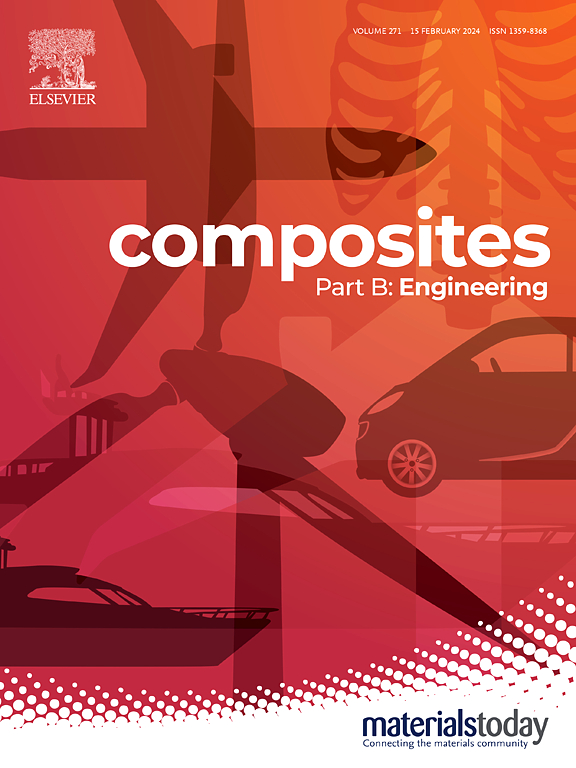Based on electrostatic adsorption constructing neural network-like structure of BNNS-OH@CNF composite films with excellent thermal management and electrical insulation performance
IF 12.7
1区 材料科学
Q1 ENGINEERING, MULTIDISCIPLINARY
引用次数: 0
Abstract
Due to the rapid development of electronic devices, there was an urgent need for polymer composite materials with excellent heat dissipation capabilities to solve the heat dissipation problem of electronic devices. However, designing an insulation composite material with simple processing methods, low cost, and high thermal conductivity and excellent mechanical properties remained a challenge. Inspired by the human nervous system, this article used cellulose nanofibers (CNF) as a template and adsorb hydroxylated boron nitride nanosheets (BNNS–OH) through a simple electrostatic self-assembly method, and prepared composite film through vacuum filtration. The BNNS-OH@CNF composite film generated a thermal conduction network similar to the human nervous system, and can achieve a maximum thermal conductivity of 10.7 W m−1 K−1 when the filler load was 60 wt%. It had good electrical insulation performance and a volume resistivity of 7.7 × 1013 Ω m. The most important thing was that the tensile strength of 34.2 MPa can still be maintained at such a high filler load. In addition, the composite film also exhibited good thermal management capabilities. This had significant application potential as a thermal management material.

求助全文
约1分钟内获得全文
求助全文
来源期刊

Composites Part B: Engineering
工程技术-材料科学:复合
CiteScore
24.40
自引率
11.50%
发文量
784
审稿时长
21 days
期刊介绍:
Composites Part B: Engineering is a journal that publishes impactful research of high quality on composite materials. This research is supported by fundamental mechanics and materials science and engineering approaches. The targeted research can cover a wide range of length scales, ranging from nano to micro and meso, and even to the full product and structure level. The journal specifically focuses on engineering applications that involve high performance composites. These applications can range from low volume and high cost to high volume and low cost composite development.
The main goal of the journal is to provide a platform for the prompt publication of original and high quality research. The emphasis is on design, development, modeling, validation, and manufacturing of engineering details and concepts. The journal welcomes both basic research papers and proposals for review articles. Authors are encouraged to address challenges across various application areas. These areas include, but are not limited to, aerospace, automotive, and other surface transportation. The journal also covers energy-related applications, with a focus on renewable energy. Other application areas include infrastructure, off-shore and maritime projects, health care technology, and recreational products.
 求助内容:
求助内容: 应助结果提醒方式:
应助结果提醒方式:


